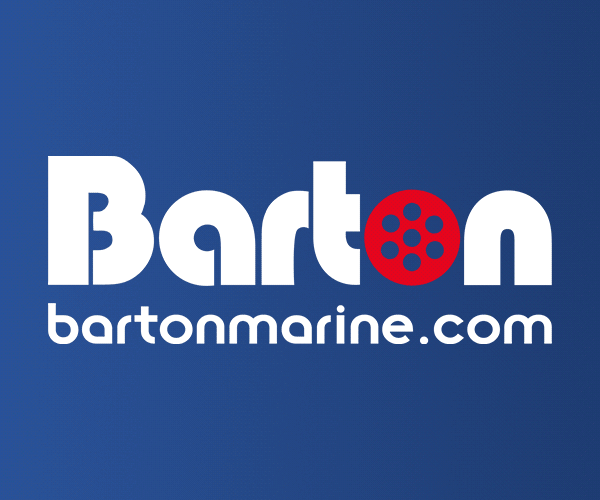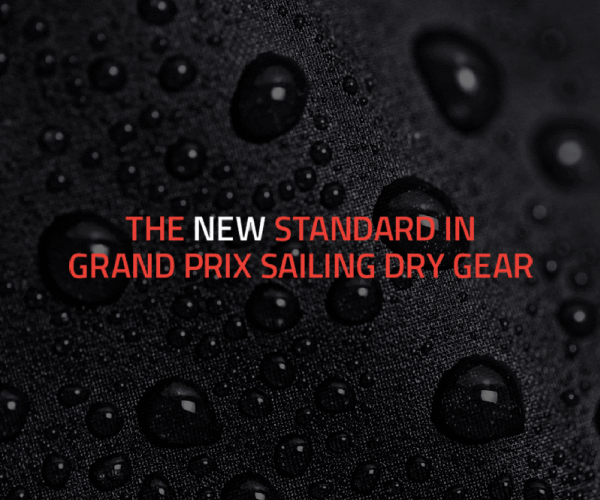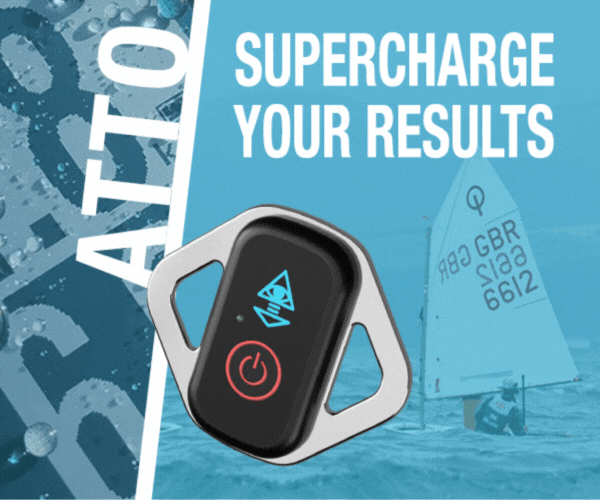Keep Clear boat question |
Post Reply 
|
Page <1 567 |
| Author | ||
Sam.Spoons 
Really should get out more 
Joined: 07 Mar 12 Location: Manchester UK Online Status: Offline Posts: 3401 |
 Post Options Post Options
 Quote Quote  Reply Reply
 Topic: Keep Clear boat question Topic: Keep Clear boat questionPosted: 07 Sep 18 at 8:49am |
|
No I understand that and the way the digram is drawn shows Yellow dead ahead of Blue in pos 1 so the explanation holds up. In the second scenario (between Red and Blue) Red is clearly on Blue's Leeward side at all times, Blue, in pos 1, is on Red's Windward side until she crosses ahead at 'pos 1.5' would this not be the 'last point of certainty' (I haven't forgotten that the term does not apply in the RRS for fleet racing)? At that point IMO the boats would be less than 2 boat lengths apart and the give way boat should already have taken some action to avoid a collision. Do the rules allow a GW boat to anticipate a change in RoW status? If not I would have though a PC would be right in penalising Blue (but not Red) for failing to keep clear. This is interesting as I expect to meet Lasers sailing by the lee with some regularity over the winter series' and some of them will undoubtedly have read this thread. So if I am Blue (in either scenario), I would be wise to keep clear of the close hauled boat. If Red I would, I think, hold my course and possibly hail "Windward boat", but what should I do if I was Yellow? BTW, in both cases at P1 (assuming the drawing is to scale) the boats are less than 3.5 boat lengths apart, in anything more than F2 this would make the boats less than 5 seconds from contact (14 metres, both travelling at around 1.5 m/s in more or less opposite directions). I'd say the decision to take avoiding action or not needs to be taken no later than P1?
Edited by Sam.Spoons - 07 Sep 18 at 8:59am |
||
|
Spice 346 "Flat Broke"
Blaze 671 "supersonic soap dish" |
||
 |
||
Brass 
Really should get out more 
Joined: 24 Mar 08 Location: Australia Online Status: Offline Posts: 1151 |
 Post Options Post Options
 Quote Quote  Reply Reply
 Posted: 07 Sep 18 at 8:55am Posted: 07 Sep 18 at 8:55am |
|
Firstly, this is an old chestnut that crops up in a rules forum once every couple of years or so. It is a 'puzzle question': it's hypothetical; it's not as if it's ever been protested in reality much less taken to Appeal or a WS Case. In practice, I would expect Y, close hauled on starboard to be expecting to have right of way on the whole world, and as Y sees B coming, Y will be hailing 'leeward boat here', and B, knowing that she is on a dead run and should normally be giving way to boats close hauled on the same tack to keep clear of Y without any argument. Unless one of them has recently read a thread on an internet forum, they're not going to get to the nobody required to keep clear conclusion on the water. If it came to a protest, lets consider two scenarios: Y changes course, avoids contact and protests B, and neither boat avoids, there is contact and one of them (probably Y) protests. Y changes course, avoids contact and protests The protest committee's conclusions are really going to depend on the evidence the parties bring and the argument and application of the rules that they contend for. If Y has a picture in her mind of close hauled boat and boat running on the same tack, her evidence might very well suggest that B was not by the lee, and was clearly windward. Who knows what B might say. I'd have to agree with you that I would expect many protest committees (not having read any internet forums recently) to conclude that B broke rule 11. No change in course and contact Again, this is going to be driven by the 'picture' the parties portray in their evidence, and how well each argues her case. As above, I'd really expect a protest committee to conclude that B broke rule 11 and 14. Remaining issue is whether Y broke rule 14 and if so, whether she was exonerated. If B was jinking around on waves ad Y was doing the dance of death, then maybe she would get off, otherwise, there's nothing to have stopped Y changing course and avoiding contact, and Y breaks rule 14. As to the difficulty of a boat, even being aware of this difficult application of the rules, accurately perceiving the relationship with other boats, see my reply to Mozzy above: Initially it may be that the boats are so far apart that it is not possible to say that one is 'on the leeward side of the other. That's unfortunate, but it sometimes happens and as JimC has pointed out, the cure would probably be worse than the disease.
|
||
 |
||
Sam.Spoons 
Really should get out more 
Joined: 07 Mar 12 Location: Manchester UK Online Status: Offline Posts: 3401 |
 Post Options Post Options
 Quote Quote  Reply Reply
 Posted: 07 Sep 18 at 9:32am Posted: 07 Sep 18 at 9:32am |
|
|
This could be solved by adding 'rule 12.5' "On The Same Tack on different legs of the course, a boat sailing a downwind leg shall keep clear of a boat sailing an upwind leg"? The only place where there may be ambiguity would be where the legs are slightly either side of a beam reach but boats on different legs and converging would either be on opposite tacks to travelling in substantial the same direction so rules 10, 11 or 12 would cover the situation.
Edited by Sam.Spoons - 07 Sep 18 at 10:39am |
||
|
Spice 346 "Flat Broke"
Blaze 671 "supersonic soap dish" |
||
 |
||
Brass 
Really should get out more 
Joined: 24 Mar 08 Location: Australia Online Status: Offline Posts: 1151 |
 Post Options Post Options
 Quote Quote  Reply Reply
 Posted: 07 Sep 18 at 9:46am Posted: 07 Sep 18 at 9:46am |
|
|
||
 |
||
JimC 
Really should get out more 

Joined: 17 May 04 Location: United Kingdom Online Status: Offline Posts: 6662 |
 Post Options Post Options
 Quote Quote  Reply Reply
 Posted: 07 Sep 18 at 12:36pm Posted: 07 Sep 18 at 12:36pm |
|
|
As Brass points out its basically a puzzle.
Even if this rather unlikely scenario comes up, and it is unlikely really, it seems to me that the key things are: There is no circumstance in which the running boat has right of way, and the running boat is always obligated to avoid contact. From the running boats point of view the only difference is the subtle one between being required to keep clear and being required to avoid contact. Similarly the beating boat only needs to be aware that it is just possible that they may get in a situation where they don't actually have right of way, and in that case if they fail to avoid a collision they will not get exonerated. Edited by JimC - 07 Sep 18 at 12:45pm |
||
 |
||
JimC 
Really should get out more 

Joined: 17 May 04 Location: United Kingdom Online Status: Offline Posts: 6662 |
 Post Options Post Options
 Quote Quote  Reply Reply
 Posted: 07 Sep 18 at 12:40pm Posted: 07 Sep 18 at 12:40pm |
|
I don't get where you're coming from on this Rupert. The whole point of the definition about leeward and windward sides of the boat is that small changes in wind direction don't make any difference. Its the direction of the boats that makes the difference. 
The situation where no neither boat is to leeward happens all the time, as seen from this sketch. But the point is that in most cases the boats will not be on a collision course, so we don't care. In my sketch only one of the 4 running positions is on a collision course with a boat on its windward side. For the pedantic, this sketch is only intended to show 3 boats, one of them in 4 positions. Edited by JimC - 07 Sep 18 at 1:21pm |
||
 |
||
davidyacht 
Really should get out more 
Joined: 29 Mar 05 Online Status: Offline Posts: 1345 |
 Post Options Post Options
 Quote Quote  Reply Reply
 Posted: 07 Sep 18 at 6:01pm Posted: 07 Sep 18 at 6:01pm |
|
|
Thanks Jim, a picture tells a thousand words ... from a practical point of view I shall continue to hail “starboard close hauled” on the basis that 99% of the time I was entitled to do so, and on the 1% that it is a precursor to who is to make the first move of the “dance”.
|
||
|
Happily living in the past
|
||
 |
||
Rupert 
Really should get out more 
Joined: 11 Aug 04 Location: Whitefriars sc Online Status: Offline Posts: 8956 |
 Post Options Post Options
 Quote Quote  Reply Reply
 Posted: 07 Sep 18 at 7:36pm Posted: 07 Sep 18 at 7:36pm |
|
|
Thank Jim, head hurts less. Cider says it will hurt again in the morning...
|
||
|
Firefly 2324, Puffin 229, Minisail 3446 Mirror 70686
|
||
 |
||
andymck 
Far too distracted from work 
Joined: 15 Dec 06 Location: Stamford Online Status: Offline Posts: 397 |
 Post Options Post Options
 Quote Quote  Reply Reply
 Posted: 17 Sep 18 at 10:39am Posted: 17 Sep 18 at 10:39am |
|
|
So. It actually happened on Saturday.
Team race course. Mark trap situation. Both on a broad reach. Blue windward was 1.5 boat lengths to windward boat bore away hard to get round the back of yellow so ended up significantly by the Lee. Yellow saw and luffed very hard beyond close hauled. Windward to windward contact occurred. Initially we felt the change of course was too aggressive as the blue windward boat had been passing behind yellow boat. After we looked at it again with the magnetic boats an we realised this was windward to windward contact. I will try to draw it later. |
||
|
Andy Mck
|
||
 |
||
JimC 
Really should get out more 

Joined: 17 May 04 Location: United Kingdom Online Status: Offline Posts: 6662 |
 Post Options Post Options
 Quote Quote  Reply Reply
 Posted: 17 Sep 18 at 12:32pm Posted: 17 Sep 18 at 12:32pm |
|
|
Sounds as if the biggest challenge might be to figure out who broke most rules! I'll be intrigued to see the drawing. Case 30 might be of interest as demonstrating that one may have broken rules before a collision occurs, even if one has ROW when the contact happens, but team racing is so specialised that I'd be silly to offer opinions.
|
||
 |
||
Post Reply 
|
Page <1 567 |
| Forum Jump | Forum Permissions  You cannot post new topics in this forum You cannot reply to topics in this forum You cannot delete your posts in this forum You cannot edit your posts in this forum You cannot create polls in this forum You cannot vote in polls in this forum |
Bulletin Board Software by Web Wiz Forums® version 9.665y
Copyright ©2001-2010 Web Wiz
Change your personal settings, or read our privacy policy
Copyright ©2001-2010 Web Wiz
Change your personal settings, or read our privacy policy

























 Printable Version
Printable Version Delicious
Delicious Digg
Digg Facebook
Facebook Furl
Furl Google
Google MySpace
MySpace Newsvine
Newsvine reddit
reddit StumbleUpon
StumbleUpon Twitter
Twitter Windows Live
Windows Live Yahoo Bookmarks
Yahoo Bookmarks Topic Options
Topic Options